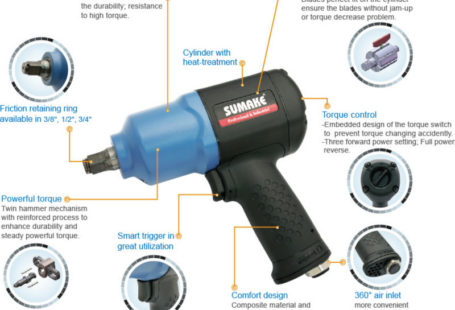Do you want to choose a plastic hose for compressed air?
Do you need a safe and durable solution to work with your application? So check out the four basic factors that will allow you to choose what you need.
A good choice is rarely a coincidence. In the industrial sector in particular, we cannot rely on blind fate. You need to know what solution will fit your needs. You can’t buy the first better compressed air tube, hoping that it will work.
To make sure that you have chosen the right one, you need to know the possibilities of the tubes. Their strengths and weaknesses will help you choose the best one for the job.
Working pressure of the hose.
Each manufacturer of pneumatic tubes in their catalogs provides a very important parameters for our selection – it is the value of pressure with which the tube can work. Described as “working pressure” tells us about the values of pressure that a pipe can withstand for a long time.

The operating pressure is usually four times lower than the burst pressure, which will definitely destroy our hose. Both parameters are given in relation to the specific temperature – for plastic tubes manufactured by the Italian company ZEC it is 23°C.
Such a large safety margin means that even accidental failure of the reducers should not lead to damage of the hose. However, it is worth remembering to use the hose at its working pressure, not its maximum pressure because it can shorten its lifespan really quickly.
Hose operating temperature range.
Plastic pneumatic pipes are very sensitive to temperature changes. Such properties are characteristic of the material from which they are made.
You cannot have everything, so you should always keep this factor in mind.
Knowledge of this phenomenon and its influence on the parameters of the tube allows us to select the pneumatic tube in such a way as to eliminate the influence of temperature on the tube.
How is it done? Each manufacturer gives a temperature correction factor – we have written about it in a different article on pneumatic tubes.
Some give it in tabular form, as a numerical indicator of the decrease in working pressure, while others in graphical form, from which you should read the values you are looking for.
The ZEC company provides us with a coefficient for every plastic used in tabular form.
Knowing the temperature at the point of application of the hose, we can determine how much the working pressure changes and how long the hose will last.
- Polyurethane – material for pneumatic hoses operating at temperatures from – 20°C to +60°C
- Polyethylene – Pneumatic tubing material operating at 0°C to +35°C, with a temperature of 1.5°C.
- Teflon (PTFE) – material for pneumatic hoses operating at very high temperatures from – 60°C to +260°C
- RILSAN – polyamide PA11 – material for pneumatic cords operating at temperatures from -40°C to +80°C
- TEKALAN – polyamide PA12 – material for pneumatic hoses operating at temperatures from -40°C to +80°C.
The working environment of the pneumatic system.
Very important in the selection of hoses is to determine the physical parameters of the environment in which these tubes will be working.

Examples of the types of materials used in the manufacture of pneumatic hoses for resistance to external influences:.
- Polyurethane – characterized by good resistance to chemical agents and very high flexibility of the finished tube.
- Polyethylene – characterized by excellent dimensional stability in the operating temperature range, good resistance to corrosive agents and resistance to microorganisms and fungi
- Teflon (PTFE) – PTFE cables were developed to meet the needs of printing technology – for high pressure transport of inks, oil, air, water, liquids containing water and steam.However, this material has certain limitations – PTFE cables are not suitable for applications where oxygen and saturated vapour under pressure is a factor
- RILSAN – polyamide PA11 – is characterized by good resistance to chemical agents, very good elasticity of the cable, resistance to abrasion
- TEKALAN – polyamide PA12 – is characterized by very good resistance to chemical agents, UV resistance, vibration and abrasion.
Even a brief analysis of the raw material used for the production of these tubes tells us a lot about their properties. However, it should be remembered that precise technical data with regard to environmental resistance are presented by manufacturers in technical catalogues.
This short description is intended to outline the overall concept of each material.
All this so that you can choose the type of hose in terms of application – answering such questions as: will the hose work cyclically bent, will it be subjected to vibration, will it work in moisture, will it work outside the building (UV) etc.?
Air flow in the tube.
This is very important if you use flexible hoses to upgrade a portion of the compressed air supply network and add additional connections to the machine’s power supply.
We do not always select the tube for the application, having already defined its diameter.

Sometimes we will have to know the air flow and select the tube so that it is not a choking element in the modernized installation.
We must be aware that wrongly selecting a pipe diameter for the intended flow can generate unnecessary costs.
In the industry, there is much talk about the cost of transporting compressed air, defining it as a value of pressure drops in the network – i. e. the difference between the air pressure behind the main filters of the compressor and the pressure at the most heavily loaded point of the network.
It is assumed that the total pressure drop, i. e. the resistance of the compressed air flow over the tested distance should not exceed 0.2 bar.
The values above this figure increase costs because of the need to maintain a higher system pressure and thus increase the electricity demand for compressors and compressor accessories.
On the other hand, much lower values than those given are associated with large outlays on modernization of pipelines (changing diameters to larger ones), which is also not advantageous – it leads to higher installation costs, an increase in the amount of air needed to fill them, and thus also an increase in electricity costs.
Summary
When selecting the air hose for a given application, it is important to pay attention to these four factors – temperature, pressure, environment and flow. If you know exactly what the conditions will be in a given place, you can easily choose the right compressed air hose.
If you are interested in modernising your compressed air system using plastic pipe technology, our engineers will prepare a design for you with all these aspects in mind.
You can contact us here: https://www.e-pneumatic.com/contacts/ and we will help you choose the best hose for your pneumatic instalation!




1 comments On 4 Factors to Consider When Selecting a Hose for Compressed Air System
The working environment of the pneumatic system is a very interesting topic.